Picture this: You wake up on an uncomfortable morning, only to find that your thermostat is blank. No numbers, no dials, just a lifeless panel.
The discomfort is immediate, and so is the stress.
Is it the batteries? The wiring? Or is it something far more complex lurking in the depths of your HVAC system?
In this article, I’m going to delve into the 11 reasons your thermostat might go blank.
Whether you’re a DIY enthusiast or someone who likes to be informed before calling in the pros, this comprehensive guide is your one-stop resource for getting your blank thermostat—and your comfort—back on track.
Here are the reasons why a thermostat goes blank:
Dead Thermostat Batteries
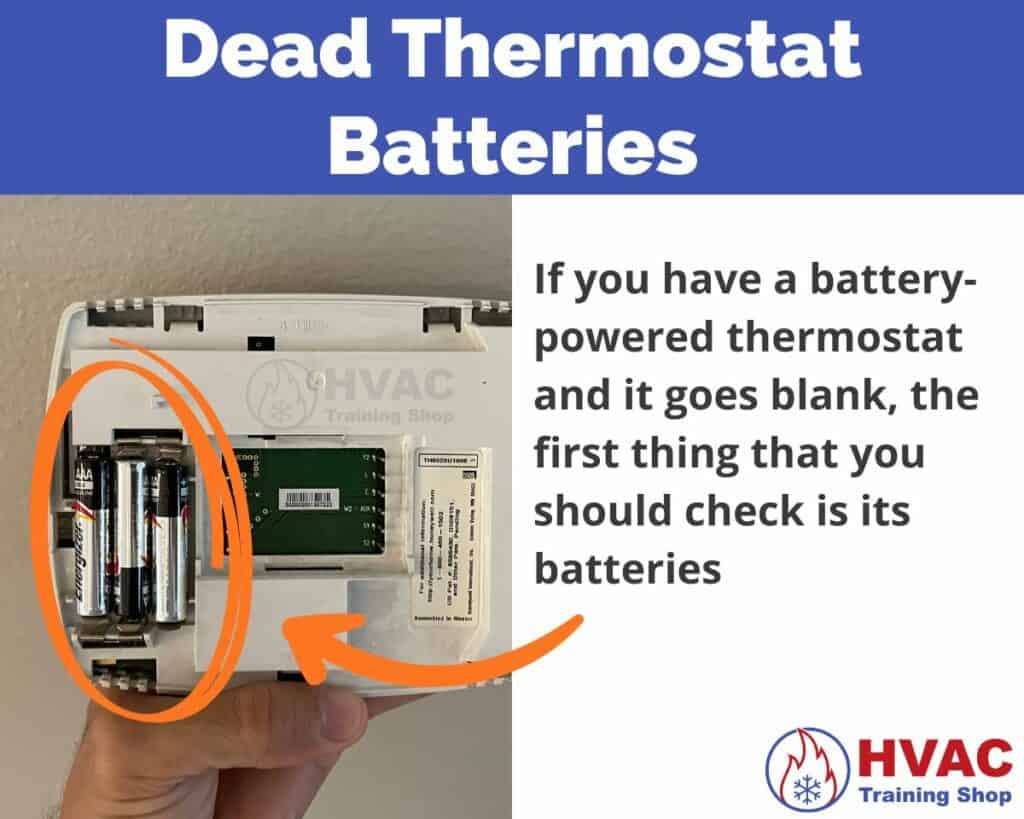
One of the most common culprits behind a blank thermostat screen is as straightforward as dead batteries. It’s a simple issue, but it’s easily overlooked.
If your thermostat is powered by batteries, your very first troubleshooting step should be to check for dead batteries.
It sounds basic, but you’d be surprised how often this simple fix brings your thermostat back on.
But what if new batteries don’t solve the problem, or your thermostat doesn’t even use batteries?
Don’t worry—I’ve got you covered.
Read on for more advanced solutions to get your thermostat—and your comfort—back on track.
Tripped Circuit Breaker
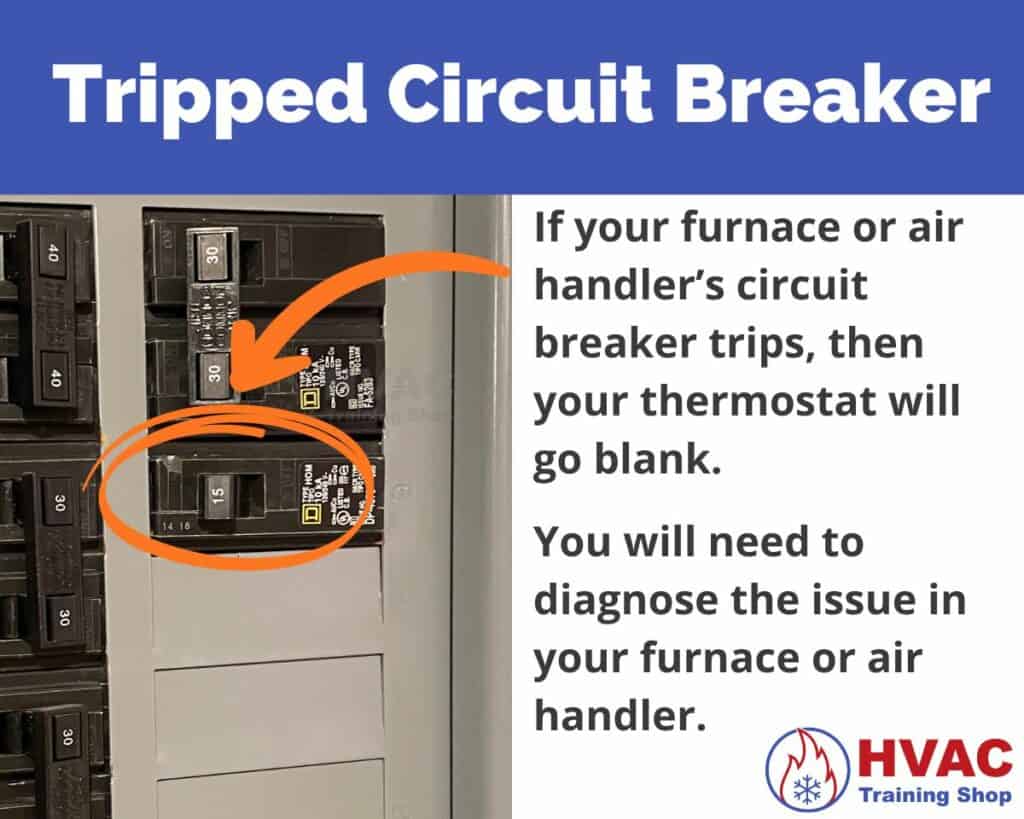
Another frequent cause of a blank thermostat screen is a tripped circuit breaker.
But what is the circuit breaker for anyway? Surely a tripped breaker is more than just a nuisance?
Think of the circuit breaker as your home’s silent guardian, stepping in to cut off power and prevent electrical fires if something goes awry.
When the circuit breaker trips, it doesn’t just safeguard your home; it also disconnects power to your HVAC system. And if your thermostat draws its power from the HVAC unit, a tripped breaker will result in a blank thermostat screen.
So, what should you do if your HVAC unit’s circuit breaker trips?
First things first: you’ll need to diagnose what caused the breaker to trip in the first place. Solving this mystery is crucial for preventing future mishaps.
For a step-by-step guide on handling a tripped circuit breaker for your furnace, be sure to check out my related article linked below:
Power Switch is Off
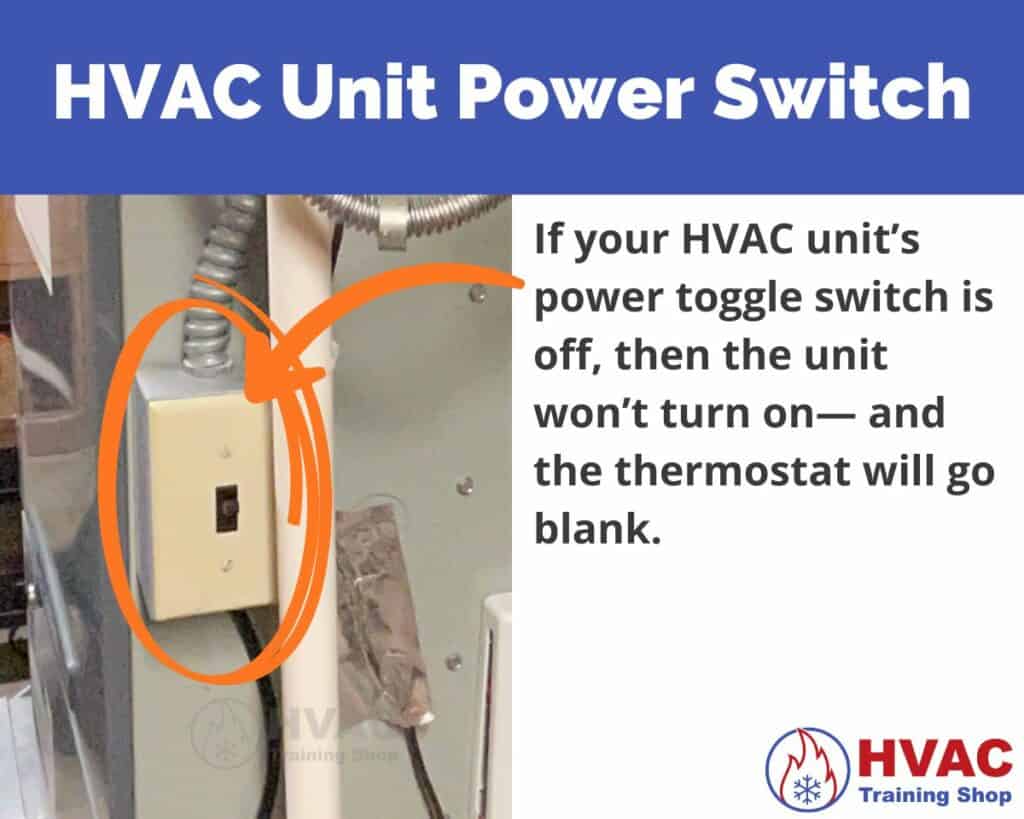
Did you have any recent maintenance or repairs done on your HVAC system?
If so, there’s a good chance that your thermostat’s blank screen could be due to something as simple as the HVAC unit’s power switch being turned off.
Why would anyone want to turn off the HVAC unit, you ask? Good question!
Typically, the power switch is an essential safety feature, allowing technicians to disable the unit during maintenance or repair work. It helps prevent accidents by cutting off electrical power to the HVAC unit.
Finding the power switch for your HVAC unit is usually straightforward. Most switches resemble the standard toggle light switches you find throughout your home.
So, take a moment to inspect your HVAC air handler. You might just find that the power switch is in the ‘Off’ position. Flipping it back on could fix your blank thermostat in an instant!
Open Door Switch
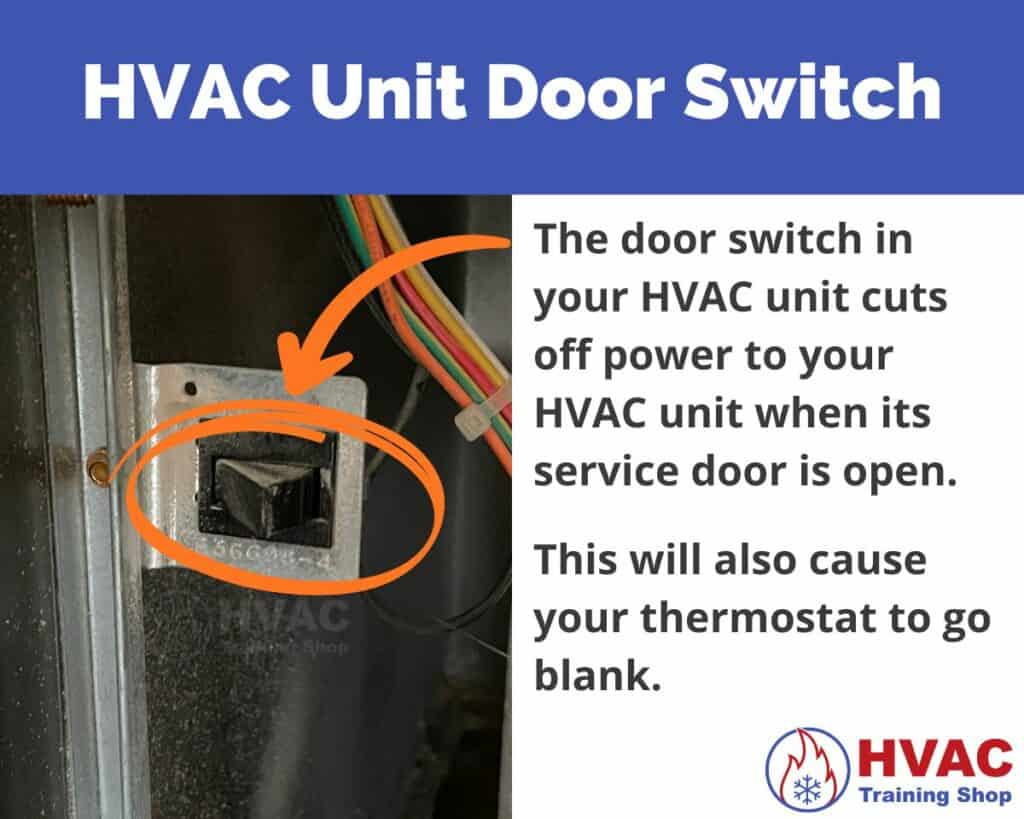
Speaking of power switches, let’s not overlook another important part: the door switch within your HVAC unit. Think of this as a secondary switch that sits between the main toggle switch and the HVAC unit itself.
So why is a door switch necessary anyway?
The door switch automatically cuts off power to your HVAC unit when its door is open.
This is crucial because a running HVAC unit contains moving parts and extreme temperatures—not to mention live electrical circuits. Operating the unit with an open door poses a safety hazard, so the door switch serves as a preventative measure.
Additionally, an open door can allow dust, dirt, and other airborne particles to infiltrate the system, potentially causing operational hiccups or even damage over time.
If you’ve recently accessed your HVAC unit and the thermostat screen is blank, check if the unit’s door is securely closed. Reattaching the cover could reactivate the door switch, bringing your thermostat back to life.
Condensate Float Switch Tripped
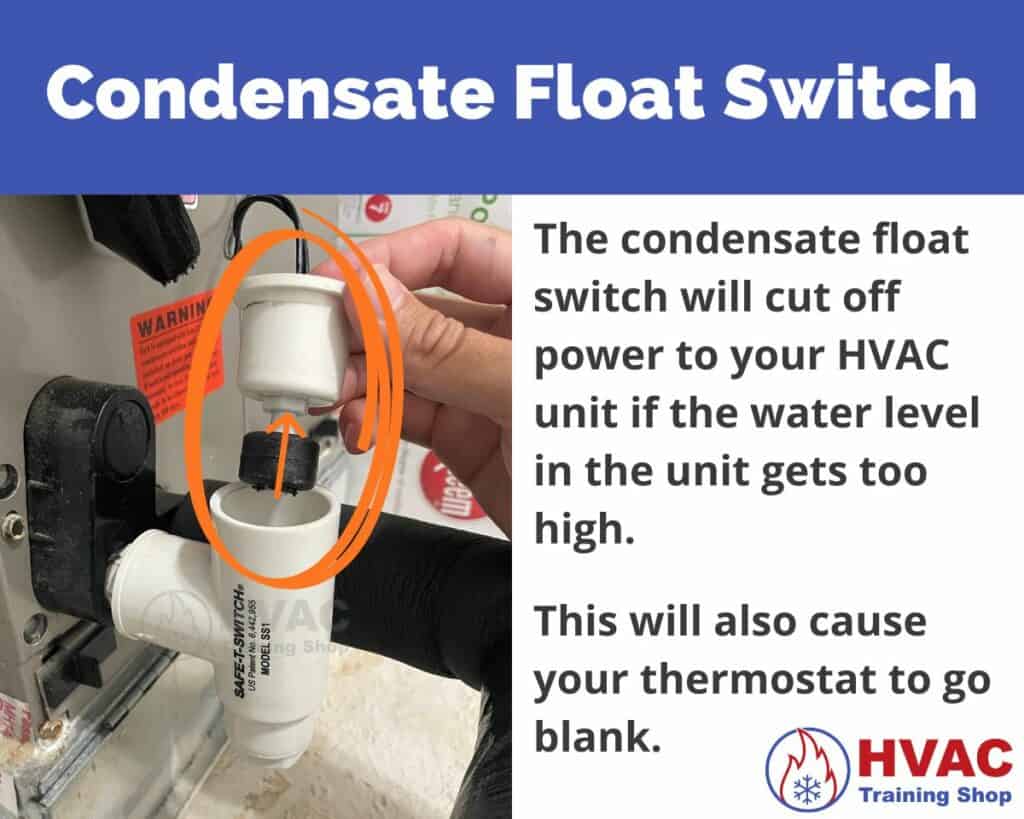
If you have an AC unit or a high-efficiency furnace, it’s time to get acquainted with another potential cause for your blank thermostat: the condensate float switch.
Why is this switch so important? It serves as your HVAC unit’s own personal lifeguard, preventing water leaks that could otherwise lead to system damage or even household flooding.
Here’s the science behind it: Air conditioners generate water as they cool your home, creating condensation. Similarly, high-efficiency furnaces produce condensate through their secondary heat exchangers.
Under normal circumstances, the water produced by your HVAC unit drains out of it. However, sometimes the drain pipe gets clogged up, and that’s where the condensate float switch steps in.
When the condensate float moves up due to elevated water levels, it triggers a switch that cuts off power to your air conditioning unit. And, you guessed it, this can result in a blank thermostat screen.
So, if you have a condensate switch installed and your thermostat is acting up, consider this: The float switch may have tripped, leading to your thermostat going blank.
Curious to learn more about the inner workings of condensate float switches and what steps to take if one trips? Don’t miss my in-depth article linked below:
Blown Control Board Fuse
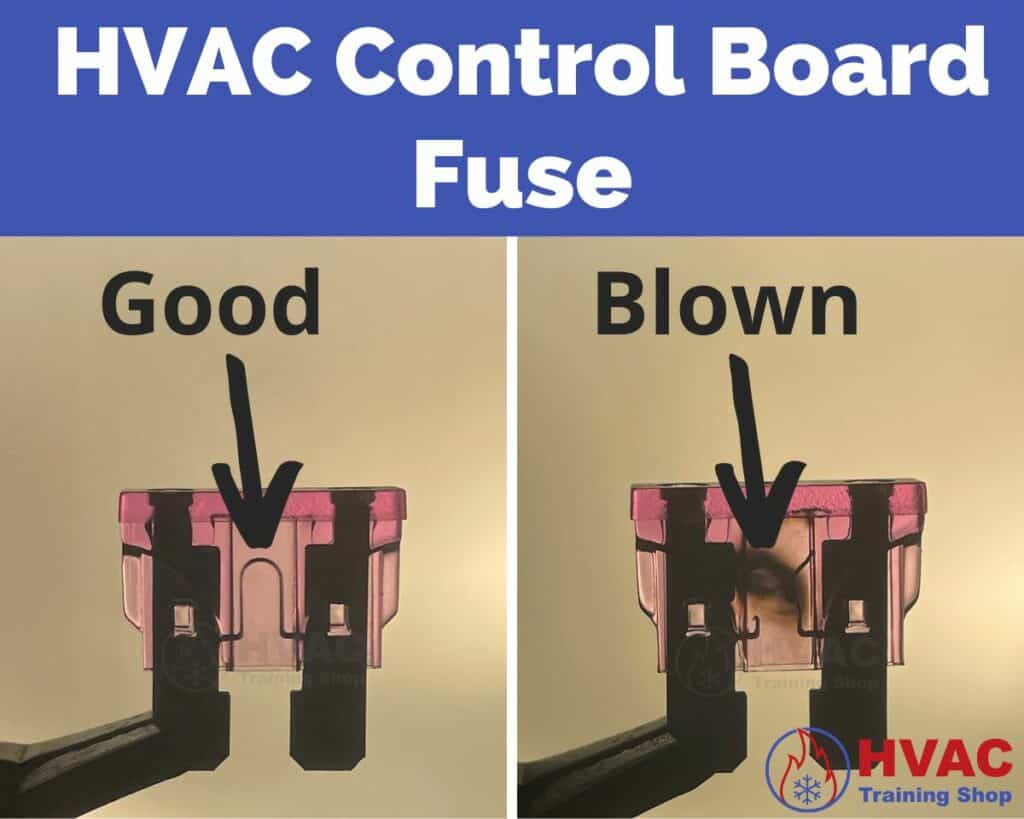
Ever heard of the control board fuse in your HVAC system? It’s one of those unsung components that, when malfunctioning, can lead to a cascade of issues—including a blank thermostat screen.
This tiny fuse acts as the guardian of your HVAC system’s low-voltage components, protecting them from drawing excessive current that could lead to malfunctions or even fires.
So, if the control board fuse blows, it’s not the culprit; it’s actually the hero of the story, doing exactly what it’s designed to do. The real issue lies with another component in your HVAC system that’s causing an electrical issue.
Why does your thermostat go dark when the fuse blows? Simple: Your thermostat is also a low-voltage device that draws its power through the control board fuse. If the fuse blows, your thermostat loses its power source.
But here’s where it gets tricky: a blown fuse could mean there’s a problem with not just the thermostat, but any number of other components in your HVAC system.
For a deeper dive into the complexities of dealing with a blown control board fuse, including your next steps, check out my detailed article linked below:
Tripped Furnace High Limit Switch
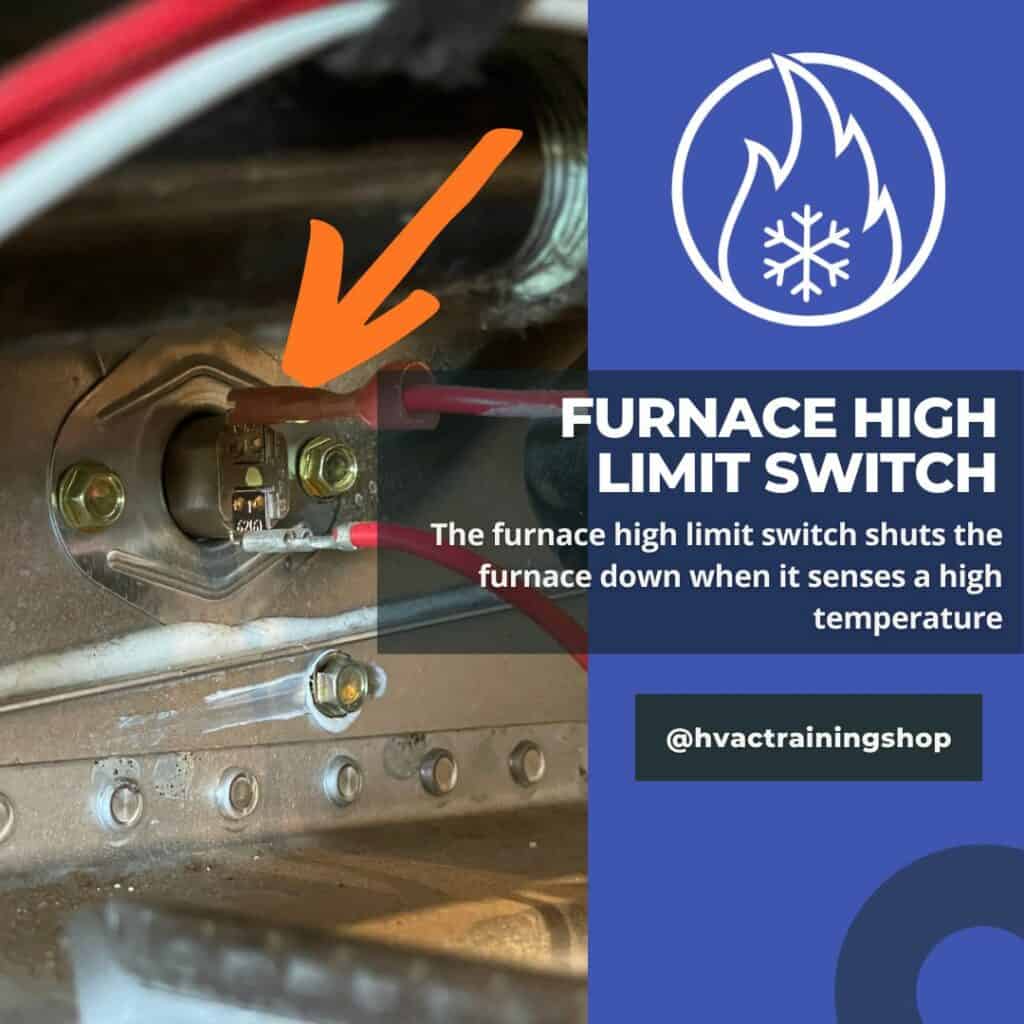
If your thermostat suddenly goes blank, another suspect might be your furnace’s high limit switch. This is particularly relevant depending on the age and type of your furnace.
Newer furnace models have advanced diagnostic features, often offering a unique error code to indicate if the high limit switch has tripped. These modern units allow for more straightforward troubleshooting.
However, if you’re dealing with an older furnace, the high limit switch might be wired directly into the low-voltage power system.
This means that if the high limit switch trips, it disrupts the low-voltage control power to your entire furnace, thermostat included.
If you notice your furnace powering up only to shut down abruptly, accompanied by a blank thermostat, then the high limit switch could very well be your culprit.
Curious about how to resolve issues related to a tripping high limit switch? My comprehensive article linked below will guide you through the troubleshooting process:
Loose Thermostat Wiring
Loose wiring might seem like an obvious culprit when your thermostat goes blank, but you’d be surprised how often it’s overlooked.
Why did I place it further down the list? Because, believe it or not, despite its obvious nature, loose wiring is rarer than you’d think. However, it still warrants a mention given its potential to disrupt your system.
Now, if you’re wondering how to diagnose a loose wiring issue, you have a couple of options:
- The Multimeter Method: A multimeter is an electrician’s best friend. By checking for voltage at both ends of your thermostat wires, you can quickly identify any discontinuity that might suggest a loose wire.
- The Tug Test: If you don’t have a multimeter, no worries. You can perform a simple tug test. Start by detaching the thermostat from the wall and gently pull each wire. This will reveal if they’re snugly secured in their terminals. Similarly, you can inspect the control board located in the air handler or furnace using the same technique.
A quick safety note: Always remember to turn off the power to your furnace or air handler before inspecting any wiring. Better safe than sorry!
Bad Thermostat
Sometimes, despite all your best efforts and troubleshooting, the root of a blank thermostat screen might be the simplest answer: the thermostat itself might have gone bad.
But how can you be sure that it’s the thermostat that’s at fault? Here are a couple of signs:
- Visual Inspection: Turn your thermostat around and inspect its back. Like a detective looking for clues, you might find black smudges or evident signs of burnt-out electrical components. If that’s the case, your thermostat’s time might be up.
- Use Your Nose: It might sound unusual, but sometimes your nose knows best. Give your thermostat a sniff. If it emits that unmistakable aroma of burnt electronics, then it’s a clear signal. Your trusty thermostat has served its time and it’s now ready for a replacement.
Remember, just as with all things, thermostats have a life span. If you find yourself confronted with these signs, it might just be time for a new one.
Bad Control Board
Could the control board be the secret villain behind your thermostat’s blank screen? It’s a possibility worth considering.
In most setups, the control board is the heartbeat of your HVAC system, serving as the main power source for your thermostat (except in the case of battery-powered thermostats).
So, what happens when the control board goes bad?
Well, if your control board fails, your thermostat loses its power. Here’s how you can confirm whether a faulty control board is your issue:
- Power Check: Start by verifying that your HVAC unit’s circuit breaker and power switch are both engaged. This ensures the control board should be receiving power.
- Status Indicator: Every control board has some kind of light or status indicator—think of it as the control board’s “pulse.” If that light or indicator is unresponsive, it could mean your control board is failing.
The absence of these signs is a red flag, suggesting that your control board might be on its last legs.
Curious to know what steps you should take if you suspect a bad control board? Check out my comprehensive guide linked below:
Bad Transformer
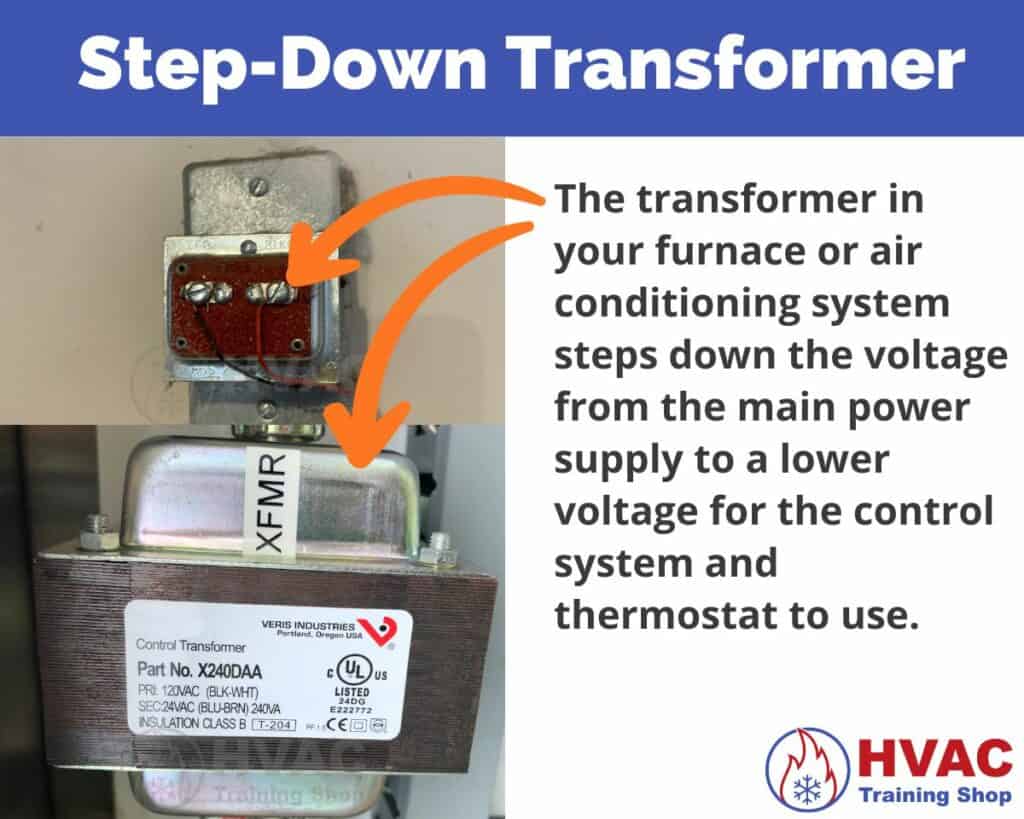
Your thermostat relies on a silent hero, often working behind the scenes: the transformer.
The transformer plays a vital role, converting your home’s standard line voltage into the low voltage that your HVAC unit’s control board and thermostat need to operate.
But what happens when the transformer fails?
If your transformer fails, your thermostat’s screen will go blank.
In many cases, the transformer is actually built into the control board, which means if the transformer fails, you might be looking at a complete control board replacement.
However, some HVAC systems have a separate transformer connected to the control board. In this case, the transformer can be replaced separately.
How to Diagnose a Bad Transformer:
- Get a Multimeter: Your multimeter will serve as the detective in this scenario.
- Test for Voltage: The procedure is straightforward. Check if you have line voltage (roughly 120 volts AC) entering the transformer and low voltage (roughly 24 volts AC) coming out.
- Red Flags: If voltage is getting into the transformer but not coming out, your transformer is likely faulty and needs to be replaced.



